More from the Review
Subscribe to our Newsletter
Best of The New York Review, plus books, events, and other items of interest
Advertisement
More from the Review
Subscribe to our Newsletter
Best of The New York Review, plus books, events, and other items of interest
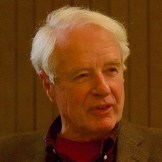
Adam Hochschild’s latest book, American Midnight: The Great War, a Violent Peace, and Democracy’s Forgotten Crisis, was published last year. (December 2023)

History Bright and Dark
Hillsdale College’s 1776 Curriculum and the documentary series based on the 1619 Project reflect deep divisions in how we recount our nation’s past.
The Hillsdale 1776 Curriculum
The 1619 Project
a six-part Hulu documentary series hosted by Nikole Hannah-Jones
May 25, 2023 issue
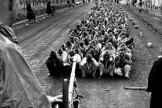
The Cruelties of Empire
Whether they were labeled internal revolts, police actions, or states of emergency, colonial wars were especially brutal.
Legacy of Violence: A History of the British Empire
by Caroline Elkins
In the Forest of No Joy: The Congo-Océan Railroad and the Tragedy of French Colonialism
by J.P. Daughton
November 24, 2022 issue
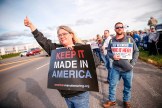
Who’s to Blame?
Three new books argue that disappearing jobs and widening inequality helped make possible Trump’s politics of resentment.
Wildland: The Making of America’s Fury
by Evan Osnos
Reign of Terror: How the 9/11 Era Destabilized America and Produced Trump
by Spencer Ackerman
American Made: What Happens to People When Work Disappears
by Farah Stockman
May 12, 2022 issue
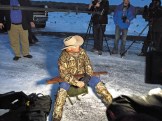
Another Great Yesterday
Shadowlands: Fear and Freedom at the Oregon Standoff—A Western Tale of America in Crisis
by Anthony McCann
No Man’s Land
a PBS Independent Lens documentary film directed by David Byars
December 19, 2019 issue
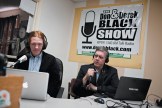
Family Values
Rising Out of Hatred: The Awakening of a Former White Nationalist
by Eli Saslow
September 26, 2019 issue
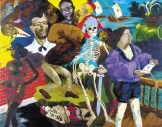
American Devilry
Beautiful Country Burn Again: Democracy, Rebellion, and Revolution
by Ben Fountain
Behold, America: The Entangled History of “America First” and “The American Dream”
by Sarah Churchwell
Hitler’s American Model: The United States and the Making of Nazi Race Law
by James Q. Whitman
October 25, 2018 issue
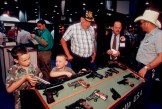
Bang for the Buck
Congress, terrified of the NRA, has shielded manufacturers and dealers from any liability for firearms deaths, and has prevented the Centers for Disease Control from doing any studies of gun violence.
Armed in America: A History of Gun Rights from Colonial Militias to Concealed Carry
by Patrick J. Charles
Loaded: A Disarming History of the Second Amendment
by Roxanne Dunbar-Ortiz
Chosen Country: A Rebellion in the West
by James Pogue
April 5, 2018 issue

Ku Klux Klambakes
Two new books give us a fresh look at the Klan in the 1920s.
The Second Coming of the KKK: The Ku Klux Klan of the 1920s and the American Political Tradition
by Linda Gordon
Ku Klux Kulture: America and the Klan in the 1920s
by Felix Harcourt
December 7, 2017 issue
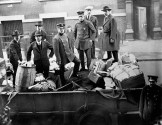
When Dissent Became Treason
A period of unparalleled censorship, mass imprisonment, and anti-immigrant terror
America and the Great War: A Library of Congress Illustrated History
by Margaret E. Wagner, with an introduction by David M. Kennedy
The Great War
a three-part television series produced by Stephen Ives and Amanda Pollak for PBS’s American Experience
War Against War: The American Fight for Peace, 1914–1918
by Michael Kazin
Spider Web: The Birth of American Anticommunism
by Nick Fischer
September 28, 2017 issue
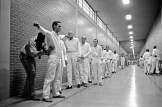
Our Awful Prisons: How They Can Be Changed
Today we have 710 people per 100,000 in prison in the US, compared to fifty-eight in Finland.
Mr. Smith Goes to Prison: What My Year Behind Bars Taught Me About America’s Prison Crisis
by Jeff Smith
Understanding Mass Incarceration: A People’s Guide to the Key Civil Rights Struggle of Our Time
by James Kilgore
The First Civil Right: How Liberals Built Prison America
by Naomi Murakawa
From the War on Poverty to the War on Crime: The Making of Mass Incarceration in America
by Elizabeth Hinton
Caught: The Prison State and the Lockdown of American Politics
by Marie Gottschalk
May 26, 2016 issue
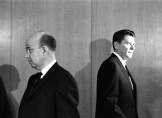
Berkeley: What We Didn’t Know
Seth Rosenfeld’s ‘Subversives: The FBI’s War on Student Radicals, and Reagan’s Rise to Power’
Subversives: The FBI’s War on Student Radicals, and Reagan’s Rise to Power
by Seth Rosenfeld
May 23, 2013 issue
In the Heart of Darkness
Memory of Congo: The Colonial Era
an exhibition at the Royal Museum for Central Africa, Tervuren, Belgium, February 4–October 9, 2005.
La mémoire du Congo: Le temps colonial
catalog of the exhibition, in French or Dutch, edited by Jean-Luc Vellut et al
October 6, 2005 issue
Free calendar offer!
Subscribe now for immediate access to the latest issue and to browse the rich archive. You’ll save 50% and receive a free David Levine 2025 calendar.
Subscribe now
Give the gift they’ll open all year.
Save 65% off the regular rate and over 75% off the cover price and receive a free 2025 calendar!